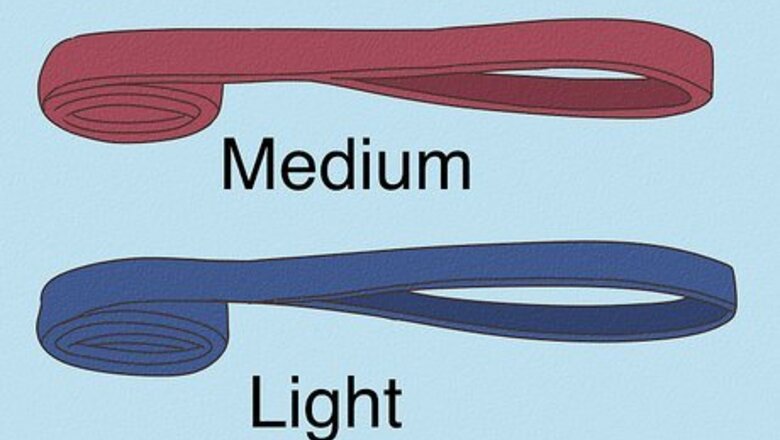
views
Performing a Basic Pallof Press
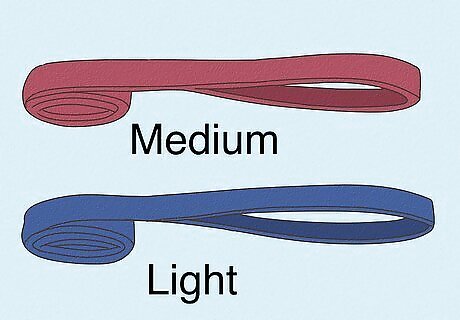
Choose the right band for you. Resistance bands are usually labeled with a measure of how strong they are. For instance, a resistance band labeled as “light” will provide less resistance than one labeled “medium.” An appropriate band will leave you feeling winded after one to three sets of Pallof presses. If you’re unsure which band is right for you, begin doing Pallof presses with the lightest band available. Use progressively heavier bands as you gain strength and endurance. Resistance bands are usually sold in packs containing bands of varying levels of resistance.
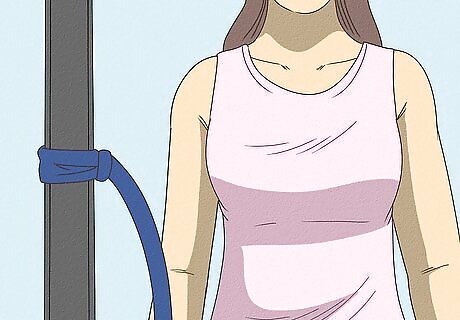
Position the band on a piece of immobile exercise equipment or a vertical bar. The easiest way to secure the band is by wrapping one looped end around the bar (or piece of equipment), then pulling it through the other looped end. The band should be tied at a height parallel to the middle of your ribs.
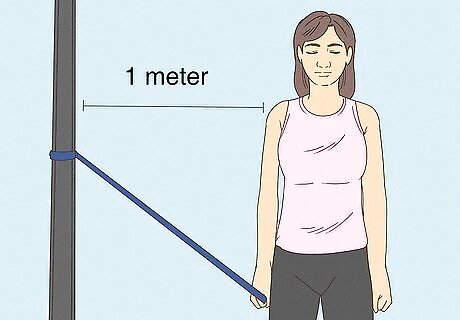
Stand with your shoulders back and down, glutes tightened, and rib cage over your pelvis. Stand about one meter (one yard) from the point where the resistance band is secured. Position your feet in line with your hip bones, with about 12 inches (30 cm) between them. Stay conscious of your shoulders as you perform the Pallof press. Resist the temptation to bring your shoulders up in order to gain more power during your Pallof press. If your feet are too far apart, you’ll end up using your legs (rather than your core) to balance yourself.

Grab the resistance band and turn to the side. Once you’ve affixed the resistance band to an immobile object, turn 90 degrees away from it and pull the hanging end of the band toward the front and center of your body. For instance, if you turn 90 degrees to the left after attaching the resistance band, you’ll then need to grab the band with your right hand and pull it to a point just below your sternum. Once the end of the band is centered just below your sternum, grip the band with both hands. You can either lay one hand over the other, or interlock your fingers.
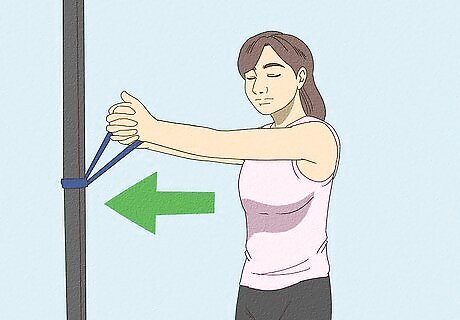
Push the resistance band directly out in front of you. Resist the motion to turn toward the point where the band is attached. After extending your arms as far as they can go, hold the position for a second.
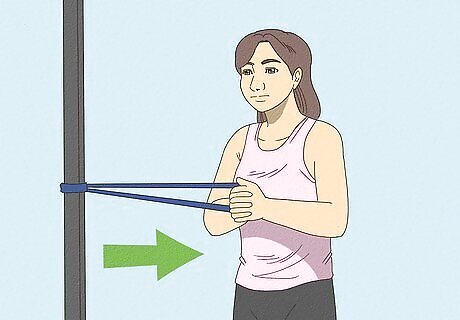
Slowly bring your arms back in. Stop bringing your arms back when your elbows touch your sides. Your hands and forearms should not touch your sides. Your hands, still gripping the resistance band, should return to their starting position.
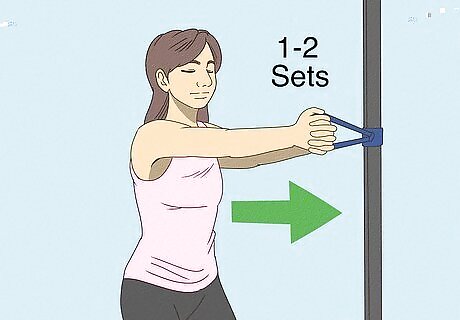
Alternate your left and right side. Perform 6-10 Pallof presses facing in one direction, then release the resistance band. Turn to the other side and perform an additional 6-10 more Pallof presses. This will complete one set. Perform one or two more sets of Pallof presses if you’re not winded by the end of your first set. The precise number of Pallof presses you perform is up to you.
Trying Variations
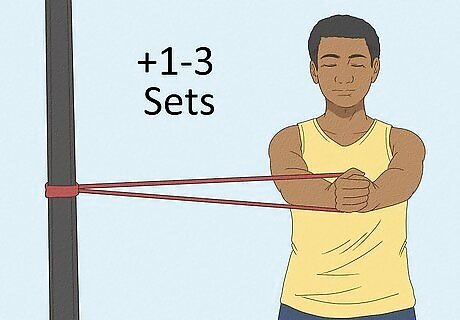
Add sets to the routine. As your core grows stronger, your endurance will increase. For instance, instead of just performing one to three sets of Pallof presses, you might do three to four sets. After you gain even more endurance, you could perform four to five sets. Add more sets after you can execute one to three sets of Pallof presses without being fatigued.
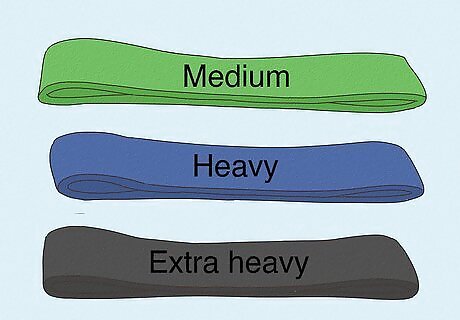
Increase the resistance level. There are two ways to increase resistance when doing Pallof presses. You could use a stronger band. Alternately, you could take another step away from the point where the band is secured. Increasing resistance will help you develop core stability.
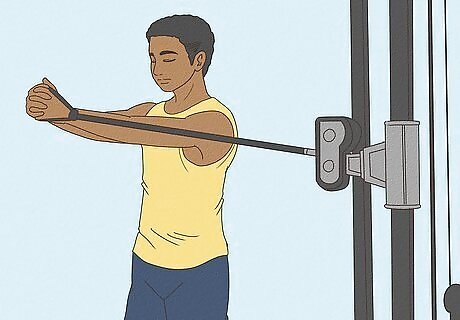
Use a cable machine. If you have access to a cable machine with height-adjustable cables, you can use it to perform a Pallof press. Simply adjust one cable to a height parallel with the middle of your rib-cage, then perform a standard Pallof press in the same way that you would with a regular resistance band. Using a cable machine offers the added convenience of being able to change the level of resistance quite easily by adjusting the weight. Don’t add so much weight that your knees start bending or your arms and shoulders start turning toward the cable machine. If you’re not sure how much weight you should be using, start off with five pounds (2.27 kilos) and add weight in small increments until you find a level of resistance that you’re comfortable pressing. Add more weight as you become stronger. You’ll know you’re getting stronger because you will feel less fatigued after performing a Pallof press.
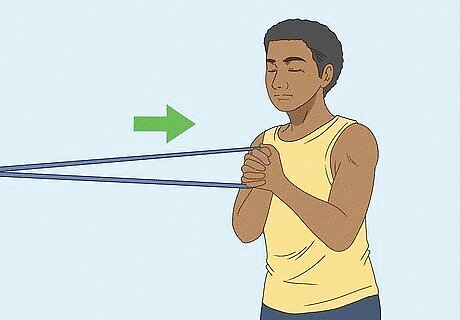
Do a head-on Pallof press. Secure the resistance band to the base of a stationary piece of equipment, or slide the handle of a height-adjustable cable machine down to its lowest position. Face the cable machine or the object that the resistance band is attached to. Pull the end of the band (or the handle of the cable machine) up to a position just below your chin. Your elbows should be pointed down and touching your belly. When extending your arms, keep your hands at the same height they started from. After you extend your arms as far as possible, hold the position for half a second, then bring your hands back to the starting position. This variation is less about building stability and more about strengthening your abs.
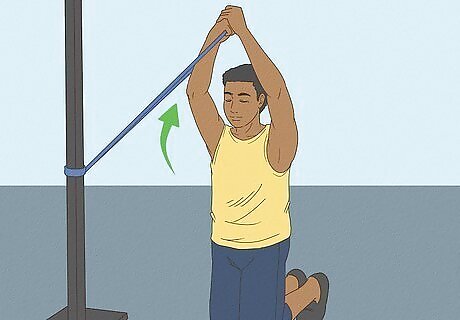
Try a kneeling Pallof press to overhead. Kneel beside the object you secure your resistance band to, and secure the band at a point parallel to the middle of your ribs. Then, with your knees on a soft training mat, perform a standard Pallof press by extending your arms. Begin moving your hands in an arc by pointing them up at a 45-degree angle. Continue moving your hands up and back until they are directly over your head. Next, lower your hands so that they are again extended directly out in front of you, then return to the starting position. Pause for half a second between each motion. Pallof pressing from a kneeling position will improve your balance, strength, and mobility. The overhead motion is great for working your shoulders and arms.
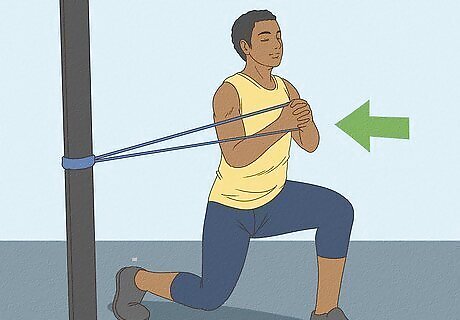
Try a split stance Pallof press. In a split stance Pallof press, one leg is extended out behind you and bent slightly at the knee. Your front leg should also be bent slightly. After adopting this stance, perform the standard Pallof press. This variation will help you improve your balance and leg strength.

Do a Pallof press up-down. Perform a standard Pallof press, but after extending your arms to their maximum in front of you, lower one leg, then the other into a kneeling position. While still holding the resistance band in front of you, pull one leg in front of you and push off the ground to stand back up. Return your hands to the center of your chest. This Pallof press variation will help you not only improve your balance, but also coordination, leg and abdominal muscles.




















Comments
0 comment